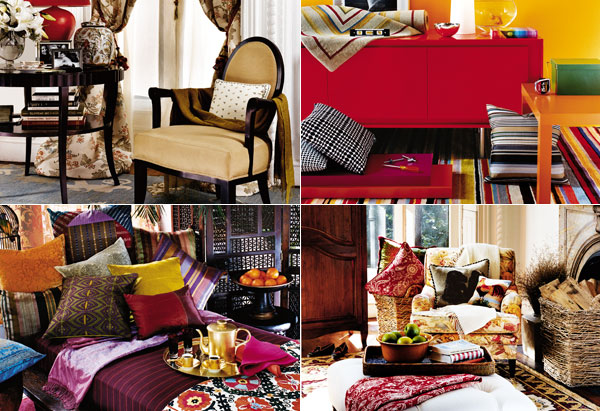What's Your Home Design Style?
The key to finding your personal style is to locate—and trust—your own gut feelings.

Photo: Fernando Bengoecha
My theory is that everybody is creative, and everybody has originality. The challenge is to harness those qualities and become confident about expressing them. Within each of us are aesthetic chords that resonate, and we really have to listen to them if we're going to create a home that's the ideal environment for us and a true reflection of who we are.
When designing your space, you have to be aware of the way you live: One room could be a dining room or an office or a playroom or a studio, depending on your needs. Are you out trekking in the woods all the time in heavy boots? You'll want a place for them. What kinds of fabrics are you going to have on your furniture if you live with young children or animals?
In my own experience, the rooms that were structurally the most difficult—dark, small, irregularly shaped—have ended up the best because I really, really had to think hard and tap into my most original ideas. There are ways to dramatically reconceive, say, a piece of furniture—by re-covering it, refinishing it, relocating it. Sometimes something looks terrible in one place and great in another.
As far as objects go, people tend to own a lot of things they once liked, things they received as gifts, or things that were just mistakes from the beginning but were never edited out. So when they say, "I don't know why this area has never looked right," it may be because it's a mishmash of disparate things. If you consider what attracts you most to objects (shape, color, pattern, material?) and get your own preferences clear in your head, you can sort through your stuff easily and create a more cohesive look. I suggest leafing through magazines and tearing out 10 or 20 or 30 pictures of rooms you really love. Go with your gut—even if photos are of a Scottish castle or some other fantasy, rip them out. Do the same with images you don't like. What's the common denominator? You'll begin to see recurring themes and hone in on what's really you.
To me, finding your own taste goes much deeper than rooms and decorating. It's about understanding yourself, gaining confidence, unleashing your creativity. Once we've become liberated in that area, we become liberated in others. We might then say: "I gravitate to pots, so why not try making pottery?" If we express our real selves in our homes, our lives there are richer. And that's not just some frivolous thing for people who have a lot of time and money. It's for everyone. All of us can come to know our own originality.
Check out our slideshow to see which home design style suits you
Diane Love is the author of Yes/No Design (Rizzoli).
When designing your space, you have to be aware of the way you live: One room could be a dining room or an office or a playroom or a studio, depending on your needs. Are you out trekking in the woods all the time in heavy boots? You'll want a place for them. What kinds of fabrics are you going to have on your furniture if you live with young children or animals?
In my own experience, the rooms that were structurally the most difficult—dark, small, irregularly shaped—have ended up the best because I really, really had to think hard and tap into my most original ideas. There are ways to dramatically reconceive, say, a piece of furniture—by re-covering it, refinishing it, relocating it. Sometimes something looks terrible in one place and great in another.
As far as objects go, people tend to own a lot of things they once liked, things they received as gifts, or things that were just mistakes from the beginning but were never edited out. So when they say, "I don't know why this area has never looked right," it may be because it's a mishmash of disparate things. If you consider what attracts you most to objects (shape, color, pattern, material?) and get your own preferences clear in your head, you can sort through your stuff easily and create a more cohesive look. I suggest leafing through magazines and tearing out 10 or 20 or 30 pictures of rooms you really love. Go with your gut—even if photos are of a Scottish castle or some other fantasy, rip them out. Do the same with images you don't like. What's the common denominator? You'll begin to see recurring themes and hone in on what's really you.
To me, finding your own taste goes much deeper than rooms and decorating. It's about understanding yourself, gaining confidence, unleashing your creativity. Once we've become liberated in that area, we become liberated in others. We might then say: "I gravitate to pots, so why not try making pottery?" If we express our real selves in our homes, our lives there are richer. And that's not just some frivolous thing for people who have a lot of time and money. It's for everyone. All of us can come to know our own originality.
Check out our slideshow to see which home design style suits you
Diane Love is the author of Yes/No Design (Rizzoli).



